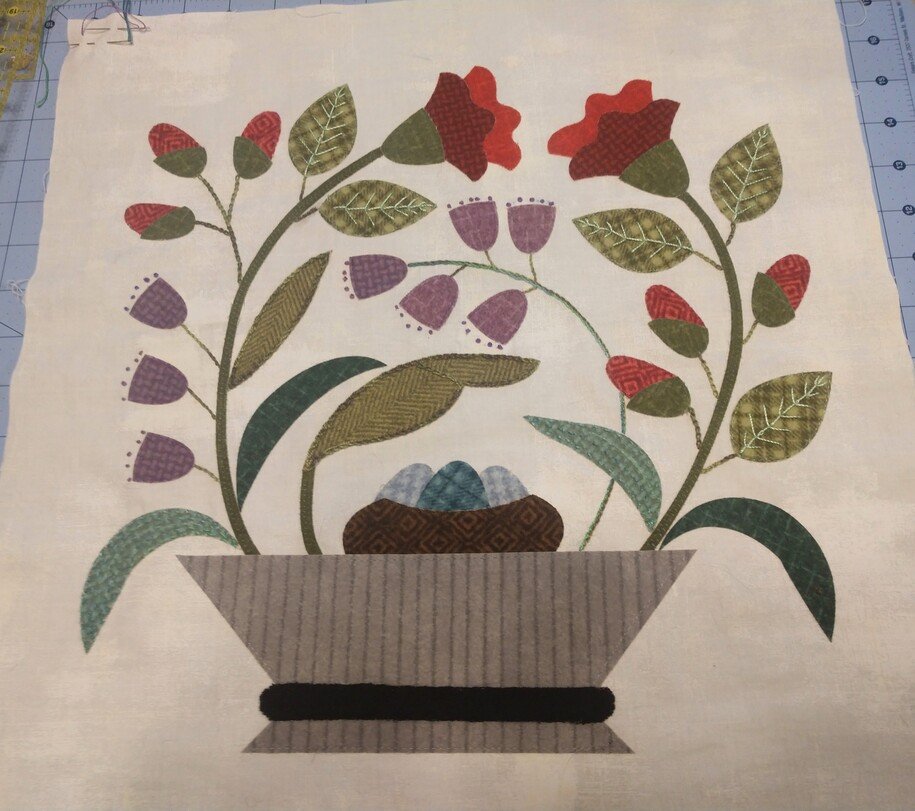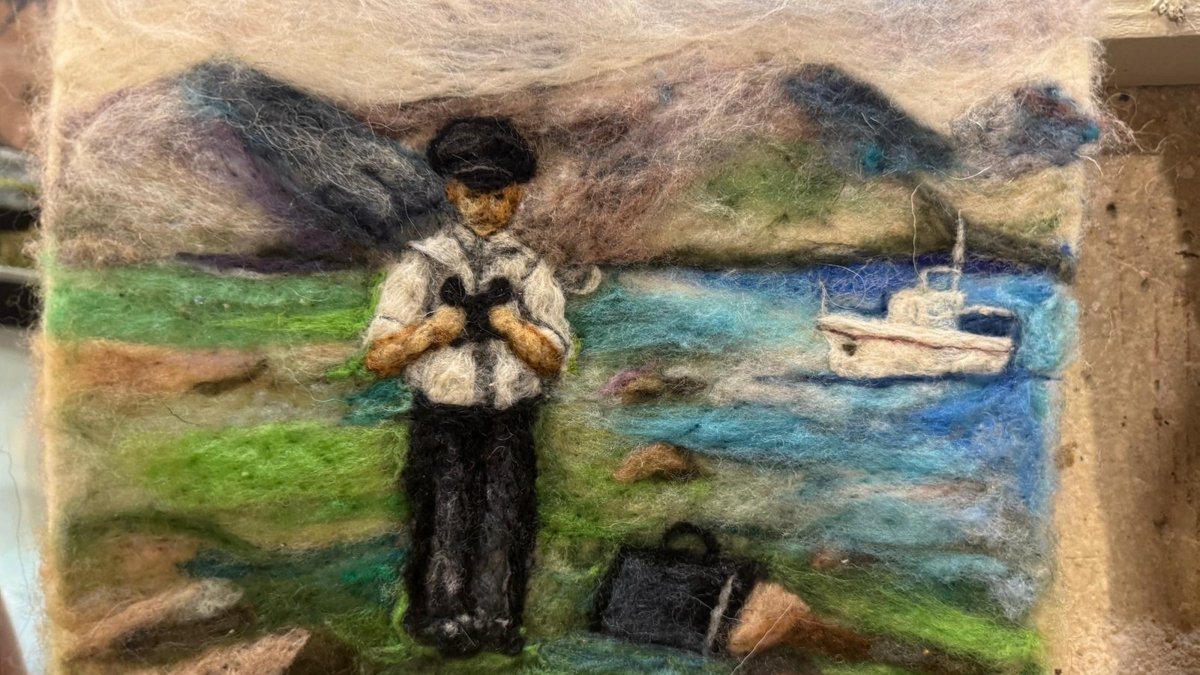There are many different definitions of Folk Art, the main concept is that the art represents an image, in whatever medium, of a cultural time and place. The Folk Art I like working in is 18th and early 19th century European and American, both in embroidery and quilting.
The art is usually representational, but not in a precise way, if that makes sense.
The image above is the first block in a Folk Art quilt I’m doing. It’s a Block of the Month from Shabby Fabrics. The background that comes with the block is black. I’ve had too many deaths in my family. So I bought a white background fabric—Vanilla Grunge. The flowers are general, without any specific meaning, the eggs are symbols of fertility and the nest is home. This is a modern piece. I’m not sure the artist is using motifs for their earlier meaning or not. If so, the flowers curving over the eggs are an indication of protection.
Below is a Folk Art embroidery of a peacock on a branch. It is from a wrist tab from a late 17th C pair of gloves. The object at the left is a stylized pomegranate. That is a point in Folk art, many things are stylized, and exist for meaning, and perspective is not a concept. Pomegranates meant variously fertility, power, and prosperity. The peacock is a symbol of renewal, immortality, and beauty.
Since this is a rendering of a period piece, the meanings are intended.
This was part of a series of classes I took in England last year.

Below is another Folk Art wall hanging. Interestingly, it wasn’t until I took this picture that I realized the gold beak is gone. I’ll have to add that back. It must have just fallen off somehow.

The center is a reproduction of a period image. There is a lot of symbolism here. The heart with the flowers and berries growing out of it signals a giving heart, reinforced by the bird (yes, it’s a bird) with some berries in his beak, an offering. It is interesting that birds are frequently shown this way in the 18th century, very fat, again I presume a concept of prosperity.
There are other folk art cultural images in various media, from Viking carvings to Amish quilts to paintings, think American Gothic, very structured and rigid, a portrayal of the times. Elizabethan embroiderers loved adding bugs, which were very realistic. Blackwork was also popular in the Elizabethan times, a form of folk art with a specific name. An art form linked to a time. (yes, I know blackwork is still done)
Crewel embroidery which was popular in the 18th-19th C originally is another folk art form with a specific name. Below is one of my pieces of crewel embroidery. I am not sure this has much symbolism beyond the concept of its style. Some crewel embroidery does have very specific meaning such as a crewel Tree of Life.

I will continue to work in various ways with Folk Art. It is an art form I like. I hope you enjoyed this.
Now as always: What Are You Working On?






